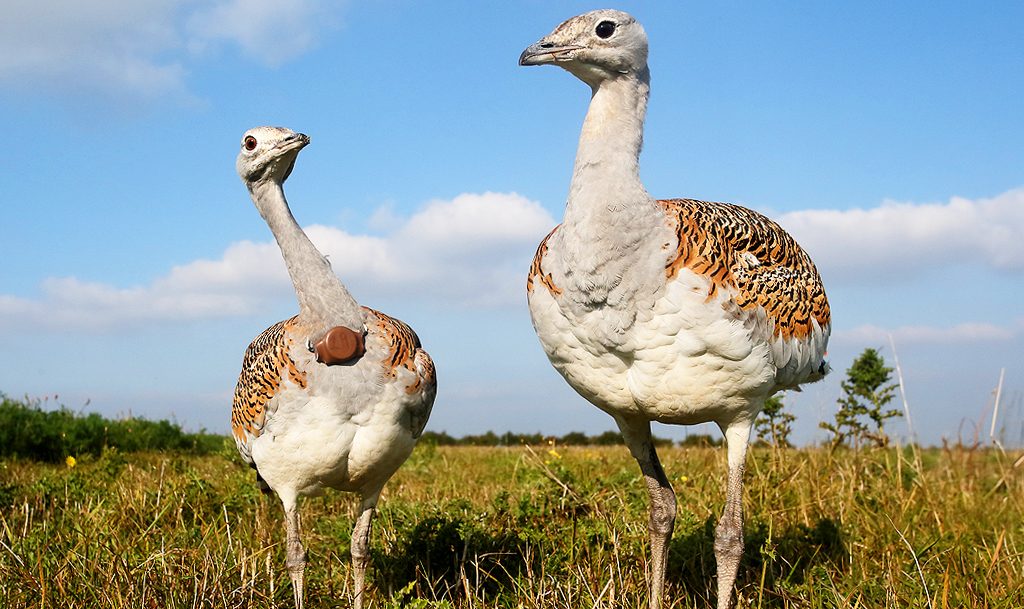Birds are notoriously light creatures, their bodies composed of feathers and hollow bones. The smallest bird, the Bee Hummingbird, only weighs an astonishing 1.6 grams!
There are large birds too, of course. These birds have typically evolved over the years to have short, useless wings, which cannot sustain flight, birds such as the Ostrich or Emu or Rhea.
But what about the in-between birds—the birds that push the limits of weight and defy gravity nonetheless? These birds exist—large and unruly with wingspan that put human height to shame.
All over the world large, flying birds frequent the skies and the sea: vultures, bustards, swans, and more. These birds are heavy, ranging between 22-44 pounds. Despite their weight and the constant force of gravity, these heavy birds find ways to take flight.
These are the 11 heaviest flying birds in the world!

1. Great Bustard (Otis tarda)
Part of the: Bustard Family (related to Cranes and Rails)
Weight: 18-44 pounds/8-20 kilograms
Wingspan: Males 7-8 feet/210-250 centimeters
Found in: Europe & across Central Asia
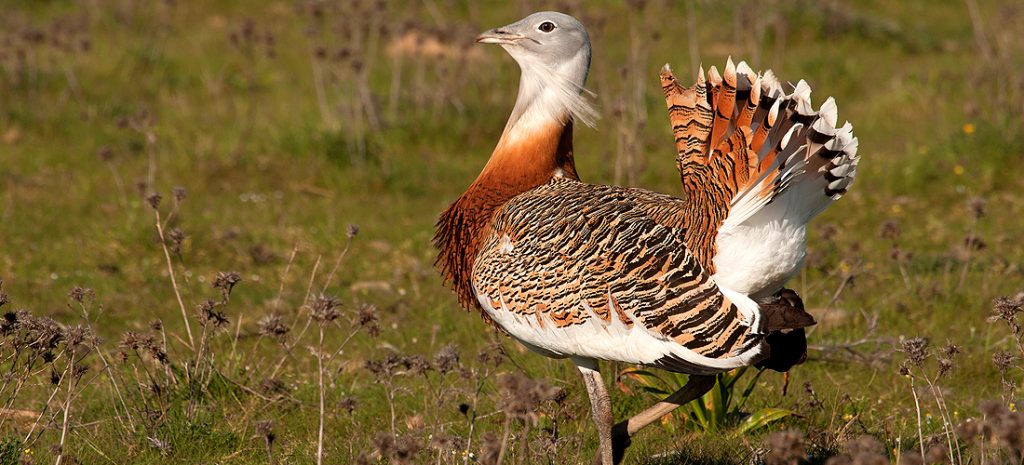
The Great Bustard of Europe and Central Asia takes 1st place as the heaviest flying bird in the world. With a maximum weight of 44 lbs, these birds impress ornithologists who have found that the Great Bustard is capable of migrating over 2,000 miles. (1)
The Great Bustard can be found in habitats such as grasslands or steppes. Males are considerably larger than females. During mating season the male Great Bustard boasts more vivid coloring and thin, lengthy feathers near its beak, suggesting whiskers or a mustache!
Also read: 11 Best Bird Seeds (to Attract Songbirds)
2. Kori Bustard (Ardeotis kori)
Part of the: Bustard Family (related to Cranes and Rails)
Weight: 24-42 pounds/11-19 kilograms
Wingspan: Males 7.5-9 feet/230-275 centimeters
Found in: Eastern & Southern Africa
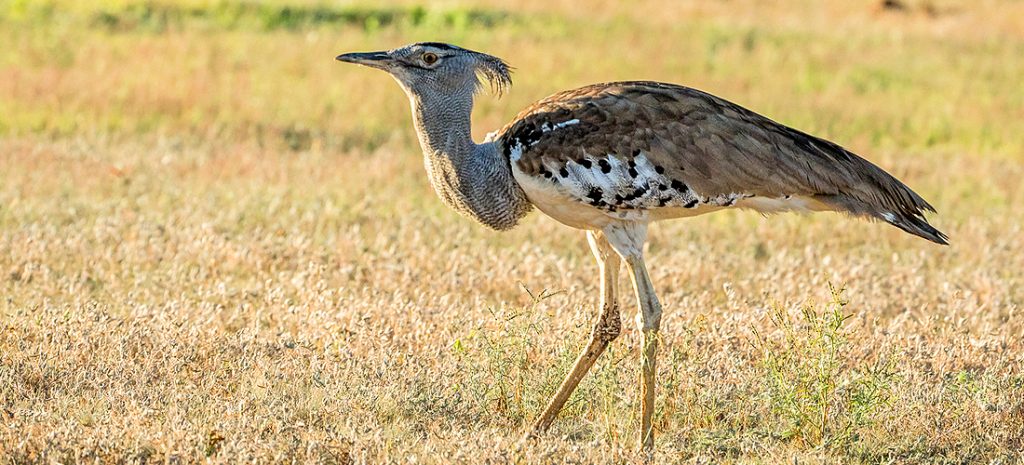
Africa is home to the largest non-flying bird species in the world—the ostrich. But it may also be home to the largest flying bird species—the Kori Bustard!
Though most credit the Great Bustard of Europe and Central Asia for being the largest flying bird, the Kori Bustard’s size is fairly comparable to its distant Eurasian relative. The Kori Bustard lives within the African grasslands and savannah, feasting on plants, berries, snakes and lizards. (3)
Also read: 12 Simple Tips to Attract Birds to Your Bird Bath

3. Great Indian Bustard (Ardeotis nigriceps)
Part of the: Bustard Family (related to Cranes and Rails)
Weight: 13-40 pounds/6-18 kilograms
Wingspan: Males 7-8 feet/210-250 centimeters
Found: sparingly on the Indian subcontinent
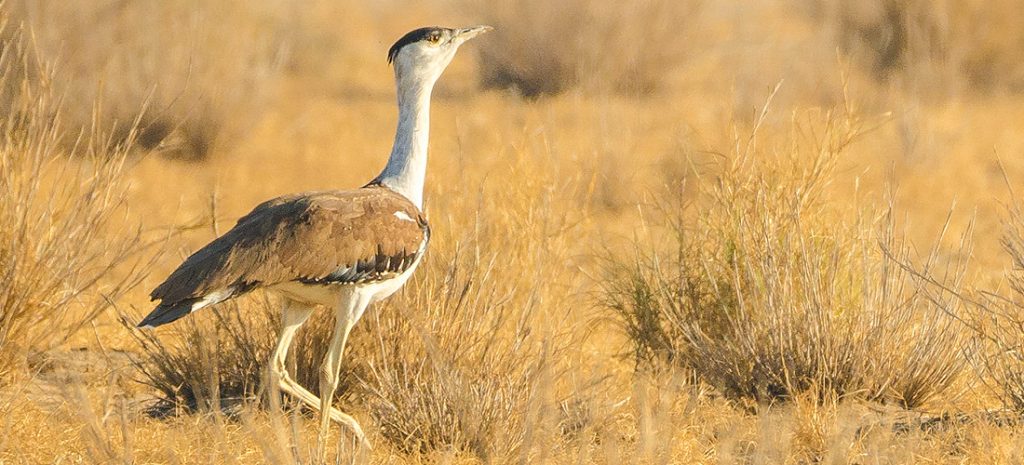
The Great Indian Bustard is the 3rd largest flying bird living today. But unfortunately, this bird faces the very real threat of extinction. With only 200 individual birds remaining worldwide, it is vital that conservationists work to protect this rare species.
Like its distant bustard relatives, the Great India Bustard makes its home amid the grasslands of the Indian subcontinent, eating an omnivore’s diet fit for a bird of its size. (4)
Also read: 20 Best Gifts for The Bird Lover in Your Life
4. Trumpeter Swan (Olor buccinator)
Part of the: Waterfowl Sub-family Anatidae (related to Ducks and Geese)
Weight: 21-38 pounds/9.5-17 kilograms
Wingspan: Males 6.6 feet/203 centimeters
Found in: North America
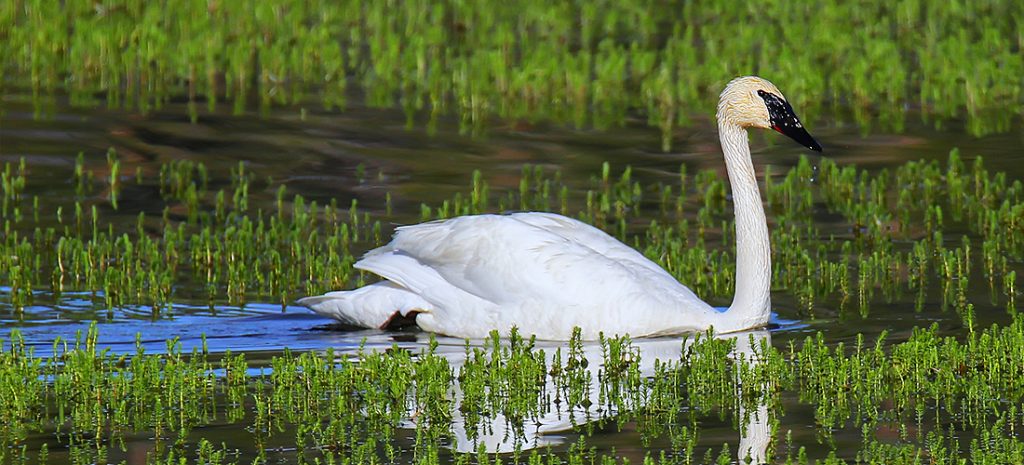
Trumpeter Swans are large migratory waterfowl that spend the summers in Alaska and Western Canada and winter further south within the continental U.S. These elegant, snow-white birds form strong bonds with their mates and will often stay loyal until one of the pair dies. (5)
The Trumpeter Swan is the largest waterfowl in North America. To take flight is no simple matter! The Trumpeter Swan requires a running start; simultaneously flapping its wings and paddling its feet across the top of the water, to gain enough speed to ensure take off. (6)
Also read: 5 Best Squirrel-Proof Bird Feeders [That Actually Work]
5. Mute Swan (Cygnas olor)
Part of the: Waterfowl Sub-family Anatidae (related to Ducks and Geese)
Weight: 22-31.5 pounds/10-14.3 kilograms
Wingspan: Males 6.8-7.8 feet/207-237 centimeters
Found: throughout the Northern Hemisphere (North America, Europe, Asia)
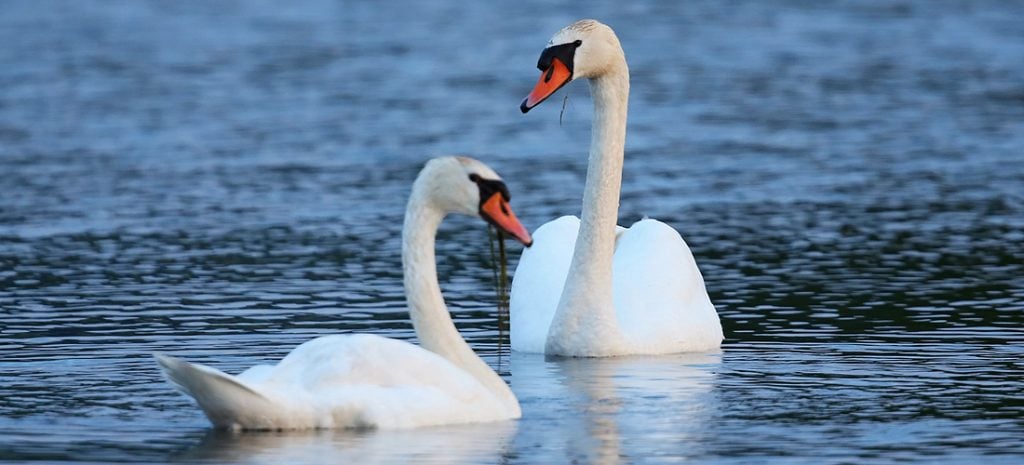
Mute Swans can be found in North America, however this regal white bird is not a native of the Americas. The Mute Swan’s natural range exists in Europe and Asia. The bird was introduced to the U.S. in the 19th century to serve as a fixture in city parks and within ponds situated on large estates.
The male Mute Swan is unique in that during mating season the black knob that sits atop its beak grows larger, making it one of the easiest ways to distinguish between the sexes. (7, 8)
Also read: 5 Best Bird Houses (to Attract Nesting Birds)
6. Whooper Swan (Cygnus cygnus)
Part of the: Waterfowl Sub-family Anatidae (related to Ducks and Geese)
Weight: 16.3-30.8 pounds/7.4-14 kilograms
Wingspan: 6.6-9 feet/200-275 centimeters
Found in: Europe, Central & Northern Asia. Occasionally in Alaska & Western U.S.
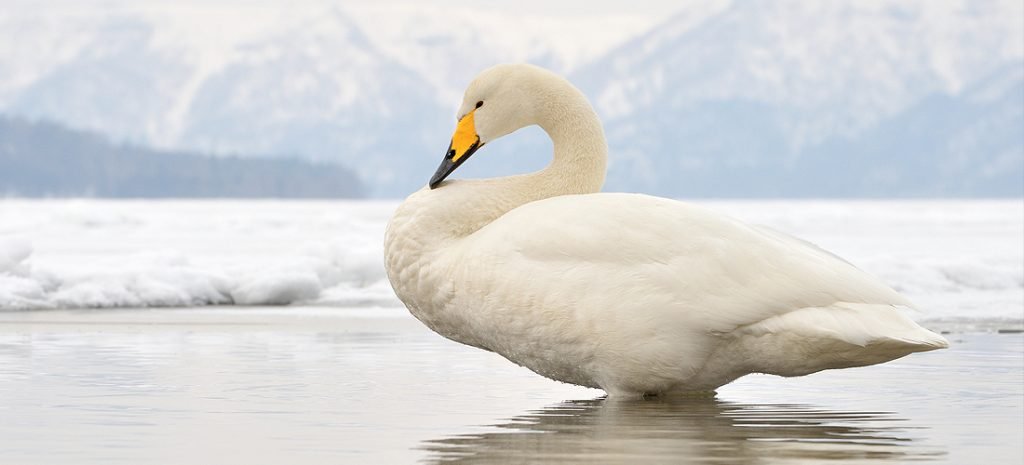
The Whooper Swan is another Eurasian bird, which migrates extensively between its summer and winter homes. Some Whooper Swans have even made a home in North America, but only on the West Coast. These birds established themselves in America by flying the distance across the Bering Sea.
Unlike their counterpart, the Mute Swan, Whooper Swans lack the dark knob above their beak. Instead, their beak is shaped like a long, angular slope that is black and yellow in color. (9)
Also read: 12 Tips on How to Keep Squirrels OUT of Bird Feeders
7. Andean Condor (Vultur gryphus)
Part of the: Cathartidae family (New World Vultures)
Weight: Up to 30 pounds/Up to 13.6 kilograms
Wingspan: 10 feet/305 centimeters
Found in: South America, specifically in the Andes Mountains
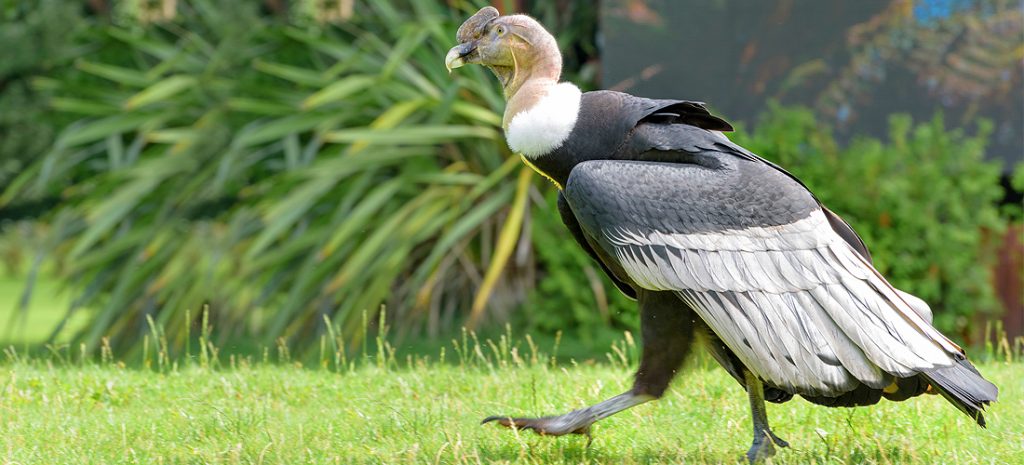
The Andean Condor lives high in the Andes Mountains. Part of the reason these birds prefer the high cliffs is that it is easier for their large wings to catch the warm rising air, allowing the bird to fly with minimal effort.
The Andean Condor may not have the widest wingspan but its wings have the most surface area. These remote birds live long lives but are slow to reproduce, often laying only one egg every other year. (10)
Also read: Bird Symbolism & Meaning (+Totem, Spirit & Omens)
8. Dalmatian Pelican (Pelecanus crispus)
Part of the: Pelecaniformes family, medium to large-sized seabirds
Weight: 23.5-29 pounds/10.5-13 kilograms
Wingspan: 10.1-11.3 feet/310-345 centimeters
Found in: Europe & Asia
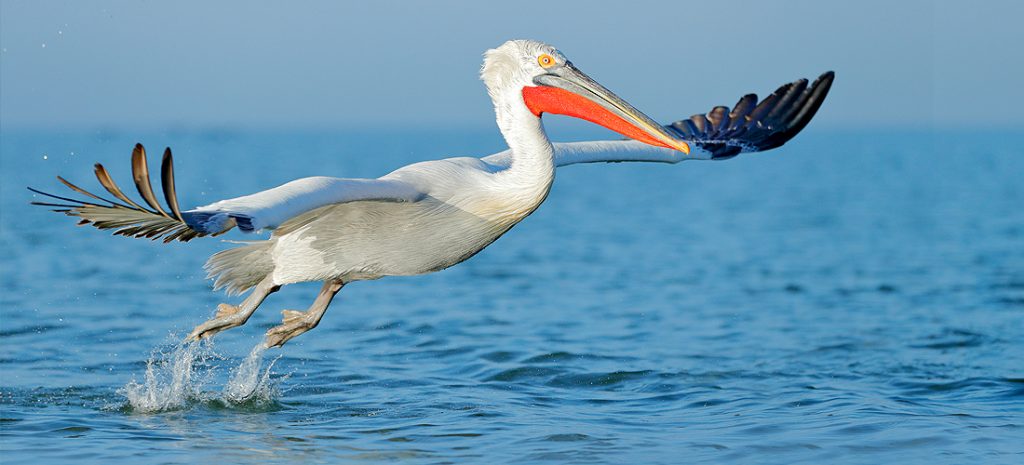
The Dalmatian Pelican is the largest pelican within the Pelecaniformes family. These birds have a massive wingspan that can reach 11 feet. Most pelicans will fish in groups, the Dalmatian Pelican is no different.
Often these birds work in groups, casually drifting atop the water before dashing their heads beneath the surface to scoop up fish. The Dalmatian Pelican’s diet consists entirely of fish. (11)
9. Cinereous Vulture or Eurasian Black Vulture (Aegypius monachus)
Part of: Old World Vulture
Weight: 15- 27.5 pounds/7-12.5 kilograms
Wingspan: 8-10 feet/250-295 centimeters
Found in: Europe & Asia
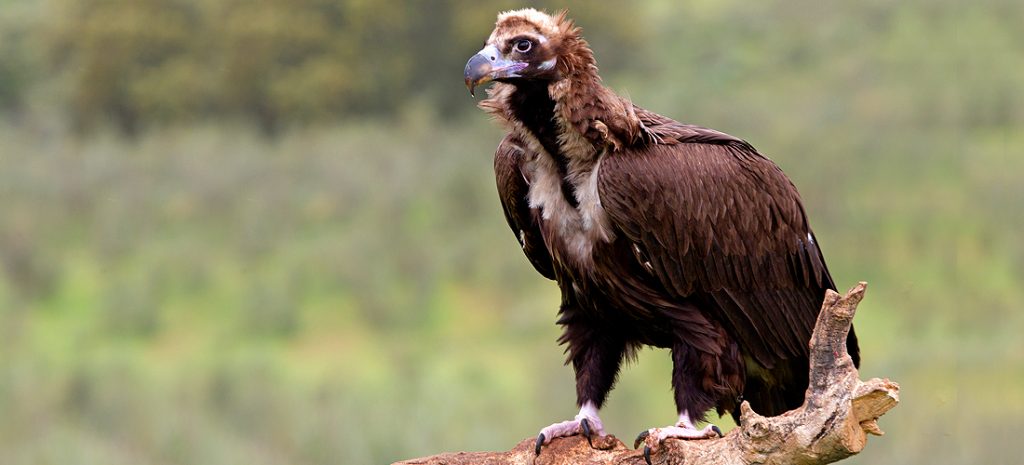
The Cinereous Vulture is the 2nd largest bird of prey, following only the Andean Condor. These vultures can be found in Europe and Asia. One of the major threats to this species is poisoning.
Humans have often used poisons to kill mammalian pests, but when these animals die vultures such as the Cinereous Vulture eat the carcasses and ingest the poison. This widespread problem has wreaked havoc on many vulture populations and other birds of prey. (12)
10. Himalayan Vulture or Himalayan Griffon Vulture (Gyps himalayenis)
Part of: Old World Vulture
Weight: 18-26 pounds/8-12 kilograms
Wingspan: 9-10 feet/270-300cm
Found: only within Central Asia, specifically the Himalayan Mountains and the Tibetan Plateau
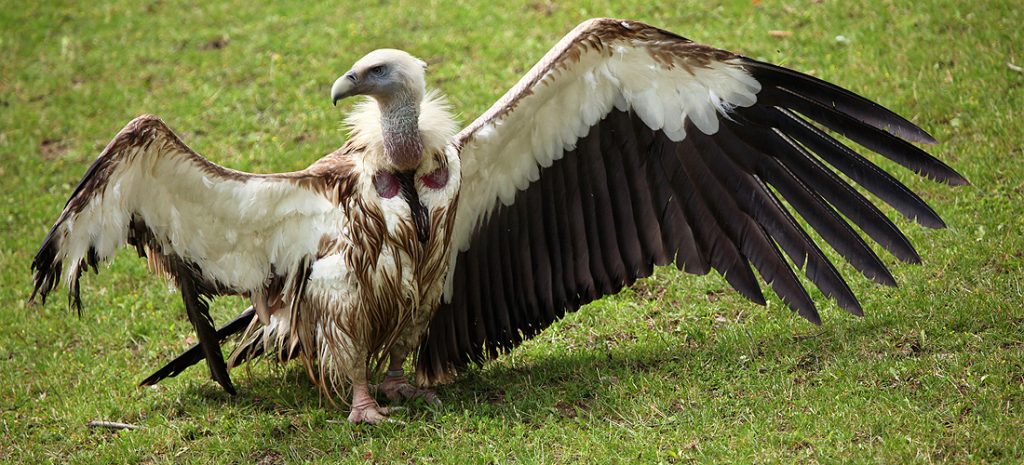
The Himalayan Vulture is a master of high-elevation flying. This bird is often seen gliding 5,000 meters above sea level among the high mountains that are home to the world’s highest peaks. These large birds use their massive wings and pockets of warm air to soar with minimal effort.
These birds do not migrate in the typical North-South or South-North pattern. Instead the Himalayan Vulture simply changes altitude to suit its feeding needs depending on the season. (13)
11. Wandering Albatross (Diomedea exulans)
Part of the: Diomedeidae family, which consists of large seabirds
Weight: Up to 22 pounds/10 kilograms
Wingspan: Males 8.2-11.8 feet/250-360 centimeters
Found: throughout the oceans in the Southern Hemisphere
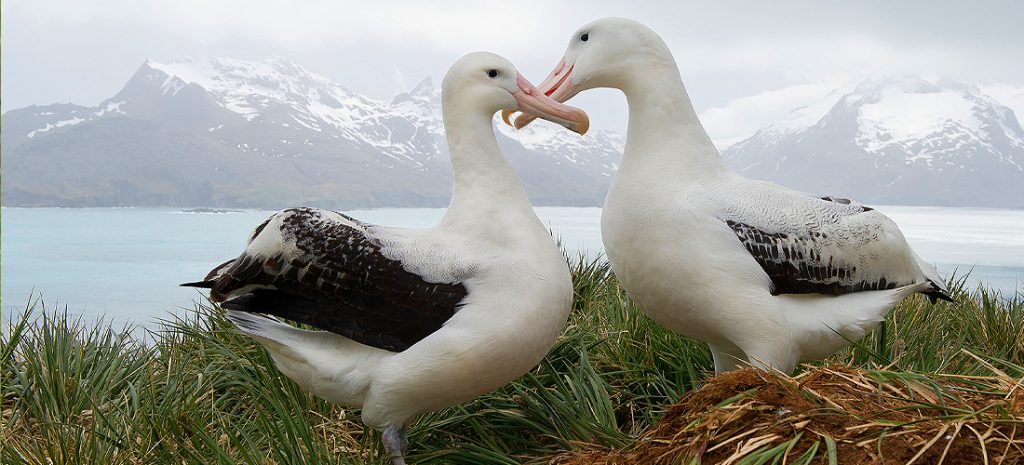
The Wandering Albatross is quite a remarkable bird. It spends most of its life at sea and only returns to land to breed. Breeding pairs tend to mate for life but only rear one chick every other year.
This incredible bird is last on our list, coming in at 22 pounds. The real impressive feature of this bird is its wingspan. The Wandering Albatross has a massive 11-12 foot wingspan, which helps it glide effortlessly for hours on end! (14, 15)

